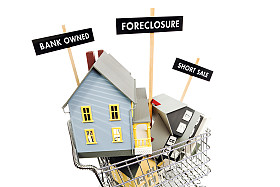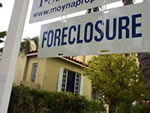Mortgages
Lending
Alt-A Mortgages Reset, Start Second Wave of Mortgage Fallout
by Amy Lillard
Jan 10, 2009 - By all accounts, 2008 was a very bad year for the U.S. and world economy. The housing crisis seemed to come to a head, and the fallout from subprime mortgages finally brewed into the storm that had long threatened. Major titans of American banking and industry were brought the brink of collapse. Unemployment spiked, spending dropped, and credit became tightly squeezed. Oh, and a recession was officially declared.

Looking for an end to the bad news? Unfortunately, there may be only more ahead.
The housing market is still in deep trouble, and now a new wave of foreclosures and loan defaults are appearing on the horizon. Last year the trouble in the mortgage market was disastrous, but foreclosures were confined primarily to subprime loans, those extended to homeowners with weak credit. As of November, nearly one-fourth of all subprime loans were in default. And now the trouble is spreading to Alt-A mortgages.
Alt-A mortgages, used by borrowers with credit slightly better than subprime borrowers, but still below prime borrowing level, are facing a reckoning as interest rates reset. These exotic mortgages lured borrowers with low initial interest rates, and the fine print revealed rates would reset after the introductory period of one to five years. Subprime and Alt-A mortgages were in high demand a few years ago, meaning the bulk of these loans are now facing that reset period.
The results will be familiar to those who paid attention to the subprime debacle. Mortgage payments will rise, often dramatically. A mortgage of $800 per month could easily jump to $1,500. Homeowners are beginning to default in droves. The Mortgage Bankers Association says one out of 10 Americans is now behind on their mortgage, the most since the organization began keeping records in 1979.
In November of 2008, 6.6 percent of Alt-A home loans were already delinquent by 60 days or more, in foreclosure, or had been repossessed. That was a sharp increase from August figures of 4.3 percent. The spike in foreclosures is happening even before many mortgages reset to their higher rates, indicating borrowers are already falling behind due to falling home worth. Many are having trouble refinancing as banks tighten lending standards.
Overall, in the next four years, eight million American families are expected to lose their homes. Which means our economic problems are far from over, and may just be getting started.
 A frequent contributor to ERATE® since 2006, Amy Lillard is a freelance writer specializing in turning complex information into useful tips and tricks for readers. For questions or topic suggestions, contact Amy at [email protected].
A frequent contributor to ERATE® since 2006, Amy Lillard is a freelance writer specializing in turning complex information into useful tips and tricks for readers. For questions or topic suggestions, contact Amy at [email protected].
More Related Articles:
Refinancing Booms, But Can it Last?
Foreclosures Rise, Congressman Calls for Moratorium
Sales Plummet, but Housing Supply Numbers Indicate Hope
New FHA Program Launches: Details, and How to Apply
Lost in Translation: What Does the Fannie and Freddie News Mean for You?
Tips on Developing a Recession-Proof Lifestyle
Fannie Mae & Jumbo Mortgage Rates
Just One Click! = Current Rate Chart


